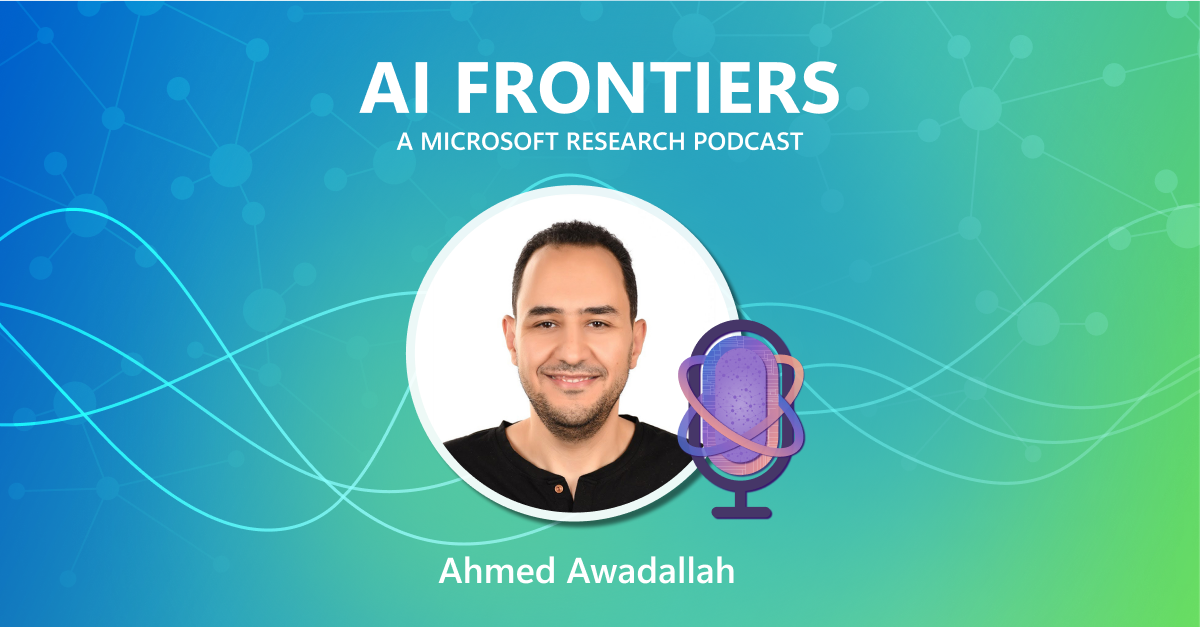
Last week, at the Microsoft Research sixth annual Latin American Faculty Summit (opens in new tab) in Guaruja, Brazil, Rob Fatland, program manager with Microsoft Research, and Humberto da Rocha, professor in the Department of Atmospheric Sciences at the Universidade de São Paulo, led an intriguing presentation about their Atlantic Rainforest Micrometeorology Sensor Network Pilot Study. It’s a study that took place a mere 130 miles from where the Faculty Summit was held—a local project that could have broad environmental impact worldwide.
MICROSOFT RESEARCH PODCAST
AI Frontiers: The future of scale with Ahmed Awadallah and Ashley Llorens
This episode features Senior Principal Research Manager Ahmed H. Awadallah, whose work improving the efficiency of large-scale AI models and efforts to help move advancements in the space from research to practice have put him at the forefront of this new era of AI.
It all began about a year and a half ago when representatives from the Sao Paulo Research Foundation (FAPESP) and the National Institute for Space Research (INPE) asked Microsoft Research for assistance in developing a senor network with capabilities of operating under rainforest conditions. The inquiry led us to reach out to our colleagues at Johns Hopkins University, where a wireless sensor network program called Life Under Your Feet (opens in new tab) was previously developed, in collaboration with Microsoft Research, for soil-ecology research. So in October 2008, Microsoft Research brought the necessary experts and organizations together and this rainforest study was born.
The project was guided by three broad goals: first, to create a scientifically valid data set; second, to successfully engineer the project so that the technology could function fully in settings as challenging as a rainforest; and third, to develop a system that can serve as a model and be replicated in other research.

As a result of this close collaboration between researchers and scientists at Microsoft Research, Johns Hopkins University, and Universidad de São Paulo, the sensor network was deployed for four weeks in the rainforest, where it captured data every 30 seconds on the temperature, humidity and light throughout the canopy. In addition, a weather station recorded the staples of meteorology: rainfall, wind conditions and barometric pressure.
The result was that the team gathered an incredibly large and accurate data set that scientists are now analyzing to help them understand rainforest ecosystems. Additionally, the technology we’ve used in this study could be applied to a variety of situations across the globe, such as monitoring receding glaciers in the Arctic or measuring seismic activity for better earthquake predictions.

As researchers, we understand that our planet and our climate are undergoing change. Our challenge is that there’s still so much science can’t tell us—so many details that aren’t understood due to lack of data. This Atlantic rainforest project is one example of science and technology working together to understand a complex ecosystem.
Regardless of where we live, this type of research is a benefit for us all. For more information and to see a video of the Atlantic rainforest research site, you can visit our Atlantic Rainforest project page (opens in new tab).
Dan Fay (opens in new tab), director, Earth, Energy, and Environment, Microsoft External Research

